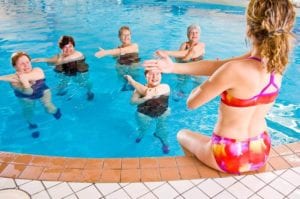Fibromyalgia is a syndrome of unknown cause characterized by widespread musculoskeletal pain. Risk factors for fibromyalgia include:
- Your gender. Fibromyalgia is diagnosed more often in women than in men.
- Family history. You may be more likely to develop fibromyalgia if a relative also has the condition.
- Other disorders. If you have osteoarthritis, rheumatoid arthritis or lupus, you may be more likely to develop fibromyalgia.
Symptoms of this usually include fatigue, trouble with sleeping, changes in mood, and issues with memory. The most common complaint is muscle pain and tenderness. Tender points can include anywhere from the knees all the way to the neck. Symptoms may come and go over time with no specific consistency. Although there are numerous symptoms, fibromyalgia does not cause body damage. Diagnosis of fibromyalgia is made by eliminating other possible causes of the symptoms as there is no definitive medical testing to diagnose fibromyalgia.
How can Physical Therapy help?
Although there is no known cure for fibromyalgia, physical therapy is a great way to help manage the symptoms of fibromyalgia and make everyday activities feel more comfortable rather than focusing on chronic pain. While fibromyalgia can include a number of different symptoms, physical therapy sessions encase all of these symptoms with just a few types of treatments. Each treatment session focuses on the individual’s needs, whether that be having more pain in knees, stiffness in the neck, fatigue with certain activities, etc.
What you may see in each treatment session:
- Slow stretches and postural strengthening exercises for efficient muscle function
- Soft tissue mobilization to areas of more tenderness and tightness
- Relaxation techniques to help reduce muscle tension
- Aquatic therapy as this is low-impact on joints
- Electrical stimulation to help with pain management
- Cold packs to reduce swelling/hot packs applied to reduce areas of pain or soreness
What happens after therapy?
Some may wonder what the next steps are after they are finished with physical therapy. Physical therapists will put together a specific home exercise program designed to the patient’s needs so that they may continue working on maintaining strength, range of motion, and keeping pain levels at a minimum. They may also suggest water aerobics, using a portable TENS unit at home or on the go, using a heating pad/ice pack when needed, and getting massages once in a while to help with deep muscle pain and stiffness. One of the best benefits of physical therapy is having a therapist who works with you on finding different ways to change daily routines to help manage symptoms.
Give one of our experts a call at any of the Makovicka Physical Therapy locations to set up a free consultation!
Emily Howser, PTA

